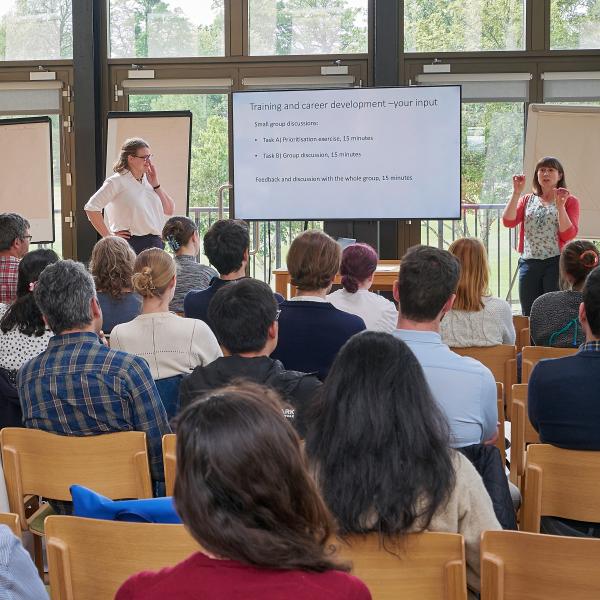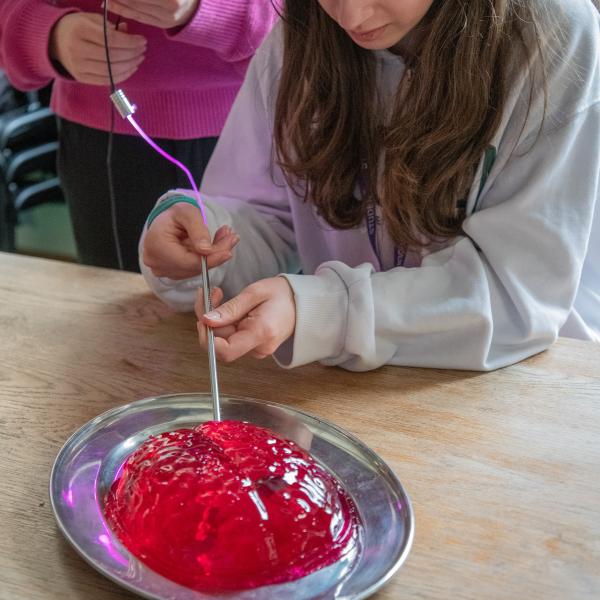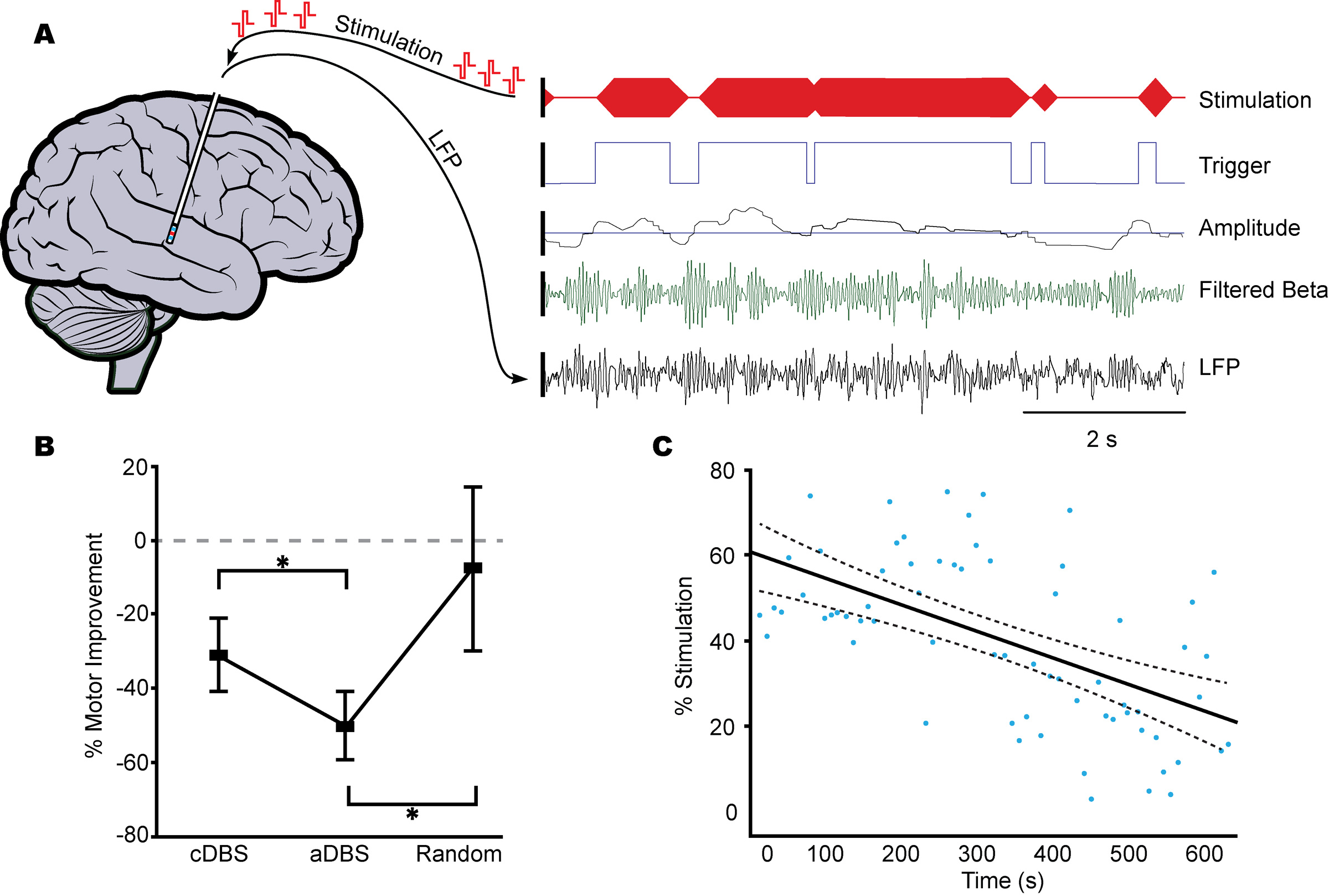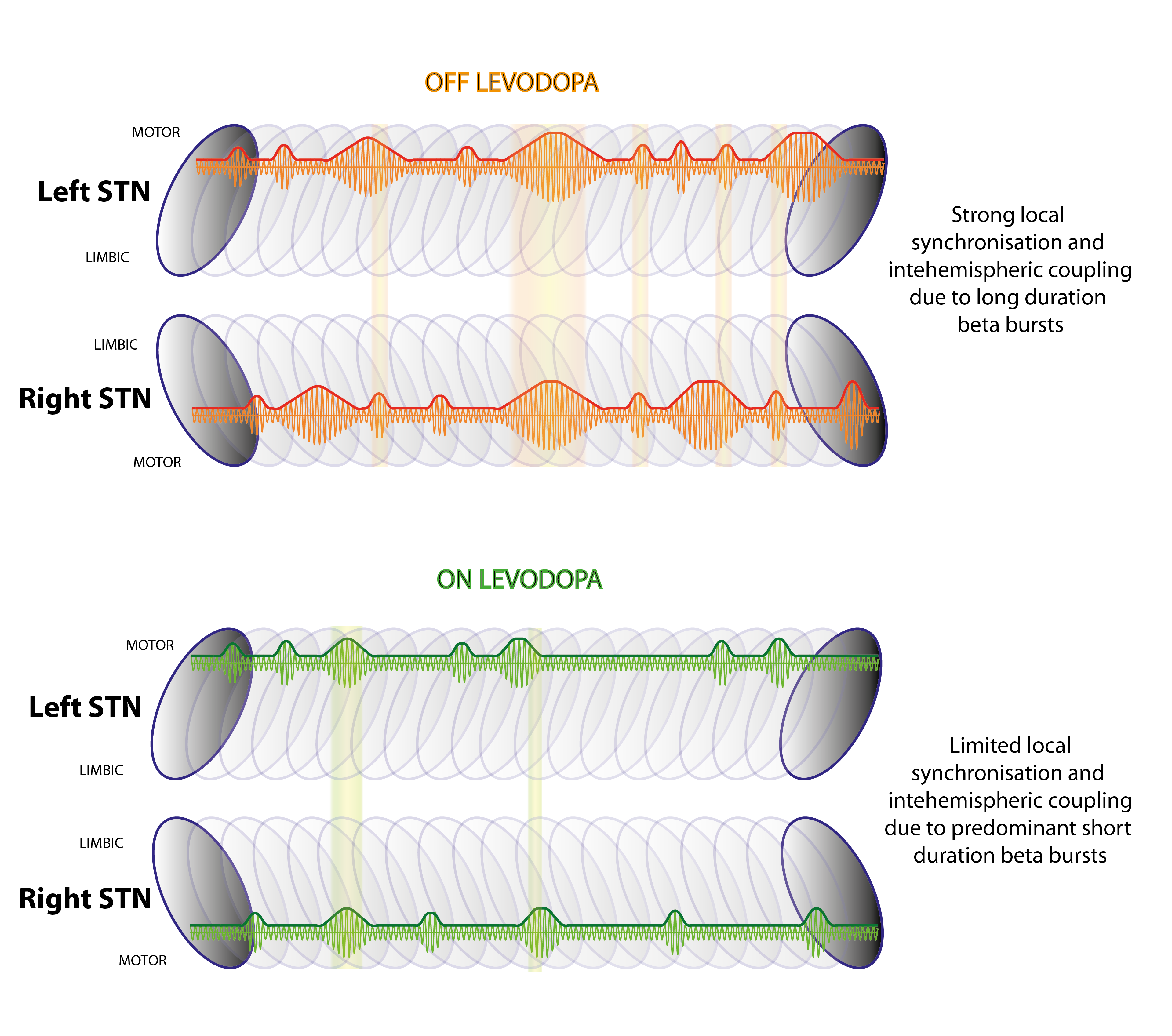Tan Group
Our goal is to define how activity in large populations of neurons is coordinated in healthy movement and how such coordination may go awry in diseases, translating this information in to improved treatment for Parkinson’s Disease, Essential Tremor and other disorders of movement.
The Group takes a multidisciplinary approach, combining experimental manipulations in healthy subjects and patients with sophisticated signals analysis and modelling. Our experimental manipulations include non-invasive brain stimulation, and often involve patients who have had deep brain stimulation electrodes implanted as treatment for problems with movement. Over the years we have made major advances in understanding how abnormal interactions between brain cells cause slowness of movement, tremor and stiffness in people with Parkinson’s disease. At the same time we have leveraged these insights to pioneer closed-loop approaches to therapeutic brain stimulation. Currently we are refining these closed-loop strategies still further, and extending them to the treatment of gait dysfunction and essential tremor. We are also capitalising on our understanding of circuit dynamics in the basal ganglia to help predict, with high spatial resolution, optimal sites for therapeutic stimulation, and are exploiting local dynamics in basal ganglia nuclei as a basis for Brain-Computer Interfaces that control the environment for paralysed patients.
- Oscillations within subcortico-cortical motor loops in health and disease
- Decoding circuit dynamics to understand and manipulate function
- Closed-loop approaches to the treatment of movement disorders like Parkinson’s and Essential Tremor
- Development of novel BCI systems based on subcortical signals for neuroprosthetic control and neural feedback training
- Non-invasive brain stimulation
We are at the beginning of a therapeutic revolution whereby we can interact with neural dynamics from moment-to-moment as necessary to reverse or ameliorate dysfunctional brain activity. To this end, we must record and interpret brain signals in real-time with sufficient temporal and spatial resolution to give nuanced control. Although electrical brain stimulation is already affording major therapeutic benefits, there is vast scope for improving and extending this to provide adaptive and tailored interventions, and for harnessing recent advances in non-invasive stimulation techniques to deliver multisite manipulation of brain circuits.
We are committed to fostering an inclusive work environment that celebrates diversity and promotes equal opportunity within our group and the wider MRC BNDU.

The enthusiastic BNDU team of scientists. (L-R) Shenghong, Chiara, Rosie and Ioana.

Mary Muers (far right) moderates an interactive session about training and career development opportunities.

After the viva voce: A happy D.Phil. candidate (centre) with satisfied examiners (left and right) and proud supervisors (far left, far right).

A visiting school pupil tries their hand at implanting a dummy stimulation electrode in a jelly brain!
Recent Preprints
Like other Groups at the MRC BNDU, we are committed to best practice in open research. We have created and curated a range of primary data, metadata and related resources that can be readily downloaded by external users from the MRC BNDU's Data Sharing Platform. We highlight below just a few examples of the datasets and other resources we have shared for the benefit of our stakeholders.












